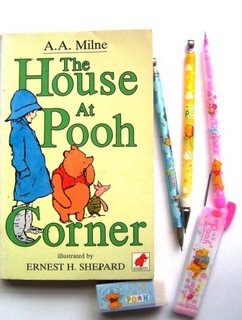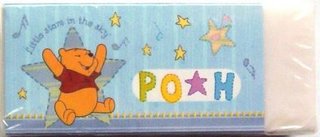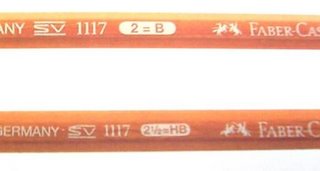I really have been a bit remiss. Pilot is a large manufacturer of writing instruments and I really should have reviewed something of theirs earlier on. They are a Japanese company, and their premier brand is Namiki which operates in the premium fountain pen market.
 Well the main feature of the Vanishing Point is it’s “vanishing point”! That is the whole sleeve tip section retracts back into the pencil body. It's all much like a ballpoint pen, you simply push the top button down and the whole tip retracts back inside the body - you don’t have to hold the button down and push the tip back in like a ‘normal’ mechanical pencil. This really is the ultimate in easy convenience, tip protection and pocket safety. There really is no excuse for damaging the lead sleeve on this pencil.
Well the main feature of the Vanishing Point is it’s “vanishing point”! That is the whole sleeve tip section retracts back into the pencil body. It's all much like a ballpoint pen, you simply push the top button down and the whole tip retracts back inside the body - you don’t have to hold the button down and push the tip back in like a ‘normal’ mechanical pencil. This really is the ultimate in easy convenience, tip protection and pocket safety. There really is no excuse for damaging the lead sleeve on this pencil.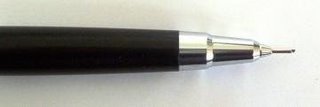 Now you see it. Now you don't.
Now you see it. Now you don't.
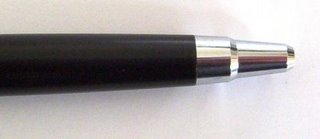
You activate the push-top ratchet lead mechanism by the same top button, and you do have to be a little careful as you can inadvertently push too hard and retract the tip rather than just advance the lead. There is an eraser under the top cap. It’s small, but a good compound that erases better then most.
Much like my favoured Pentel Sharp P205, the Pilot Vanishing Point mechanical pencil has that classic engineers pencil look about it. The body is smooth matt black plastic with lots of nice shiny chrome trims. It really is quite an impressive look. The 4mm long lead sleeve is for draughting work. 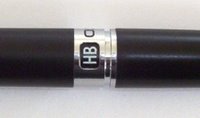 The centre band of the pencil is an adjustable lead hardness indicator. You can turn the window around to show grades from 2B up to 4H. Like Pentel draughting pencils, the lead advance mechanism only advances a short length of lead each time it is activated.
The centre band of the pencil is an adjustable lead hardness indicator. You can turn the window around to show grades from 2B up to 4H. Like Pentel draughting pencils, the lead advance mechanism only advances a short length of lead each time it is activated.
The pocket clip is a good strong functional piece of metal. “PILOT” is stamped into it in rather small insignificant lettering; the only other markings on the pencil are the large “0.5 JAPAN” on the central band next to the lead grade window.
The semi-gloss body has no specific grip section or grip enhancements so the grip is acceptable, but not great. Overall the weight and balance are fairly neutral.
- Best Points – The vanishing point.
- Not So Good Points – Not much really. If I was being picky I could say maybe they could have done a bit better with the grip, and something about accidentally retracting the tip.
- Price Range – Low.
Dimensions – Length 140mm, diameter 9mm. Balance point about 70mm up from the tip.


 So, how do you prefer your milk?
So, how do you prefer your milk? So what if things are going badly, you’ve only got a few small coins left and are in desperate need of a Pentel mechanical pencil? Well you’ve basically got three choices - Carnival, Planetz or EZ#2. The Pentel USA website sells these three direct for US 50 or 51 cents each, but if you search around other websites you can easily get 10 to 25% discount for box lots. Probably more again if search really hard, or buy more.
So what if things are going badly, you’ve only got a few small coins left and are in desperate need of a Pentel mechanical pencil? Well you’ve basically got three choices - Carnival, Planetz or EZ#2. The Pentel USA website sells these three direct for US 50 or 51 cents each, but if you search around other websites you can easily get 10 to 25% discount for box lots. Probably more again if search really hard, or buy more.

